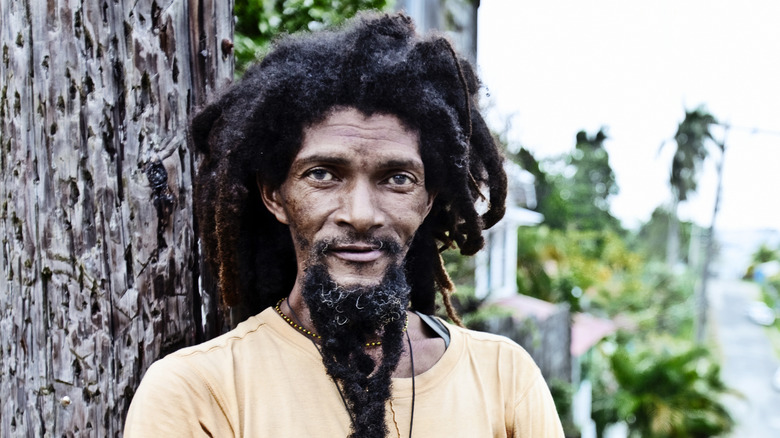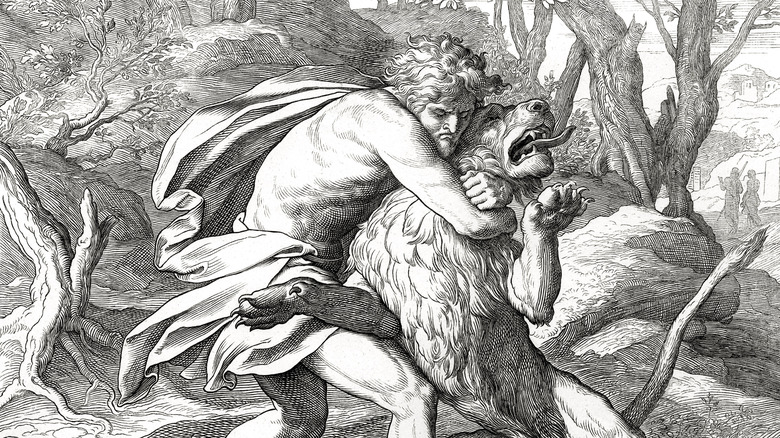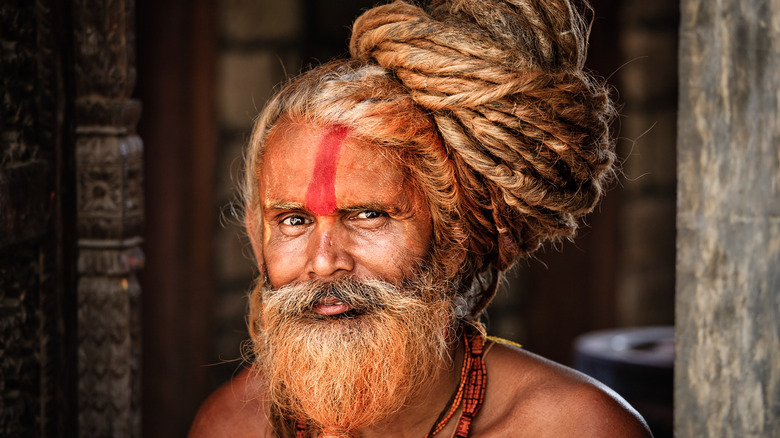Why Dreadlocks Are So Important To Rastafarians
The Jamaican religious belief system of Rastafari is perhaps one of the most misunderstood on the planet — indeed, many who have heard the world are unaware that it is a religion at all. Part of the problem that Rastafarians face is the incredible traction that their image has had in popular culture, buoyed particularly by the success in the 1960s and 1970s of reggae music, particularly that of Bob Marley and the Wailers, which spawned hits around the world.
Marley himself soon became the most prominent Rastafarian in the world, whose lyrics reflected his religious convictions. His song "Selassie is the Chapel," for example, makes a direct reference to Haile Sellasie, the former Emperor of Ethiopia who is worshipped by many practicing Rastafarians.
With Marley becoming a major force in pop culture who arguably brought the word Rastafarian to the mainstream, it is often misinterpreted as simply a lifestyle, while the stereotypical Rastafarian look that includes the wearing of dreadlocks is often erroneously dismissed as nothing more than a fashion statement. However, it is often claimed that dreadlocks are a reference to Sellasie, in particular his 1935 exile, during which warriors loyal to the emperor refused to cut their hair until their leader was restored to the Ethiopian throne. For many Rastafarians, dreadlocks symbolize courage and strength, which would chime with the story of Sellasie. But there are other theories besides the link to Sellasie that might explain the hairstyle's origin.
Dreadlocks in the bible?
At its root, Rastafari is a Christian faith, with Haile Sellasie considered to be the Messiah, the figure in whom Jesus Christ returned to Earth, as prophesied by the Jamaican leader Marcus Garvey, though Sellasie himself often denied this. Rastafarianism therefore derives its belief system from the Bible, and it is from this holy text that some believe that dreadlocks as a concept first originated.
Part of the Rastafarian faith is the taking of the Nazarite Vow of Separation, as outlined in the Biblical Book of Numbers, which prevents practitioners from drinking alcohol, coming into contact with a dead body, and cutting their hair or beard: the origin, perhaps, of the Rastafarian tradition of wearing hair in long dreadlocks.
One of the most famous stories of a Nazarite in the Bible is that of Samson (pictured), whose long flowing hair endowed him with superhuman strength but was betrayed by his lover Delilah, who shaved his head and betrayed him to his enemies. For those who have taken the Nazarite Vow, Samson's is a cautionary tale.
Some sources claim there is an Indian lineage
Sources have also attributed the first intentional wearing of dreadlocks to various African tribes. However, another argument goes that the Rastafarian tradition of wearing dreadlocks may in fact have a non-African origin.
It is sometimes claimed that the figure of the Sadhu, a Hindu ascetic and mystic found mainly in India, may have been the original inspiration for Rastafari's dreadlock tradition, with researchers such as Ohio State University's Vincent Burgess arguing that the look, plus the practice of smoking marijuana, may have arrived in Jamaica in the early 20th century with the arrival of Indian laborers (via Knowledge Bank).
But regardless of their true origin, scholars such as Ennis Barrington Edmonds note that the dreadlock hairstyle remains a strong symbol of Rastafari, as a marker of an African diaspora religion looking to express its identity and faith on its own terms (via "Rastafari").


